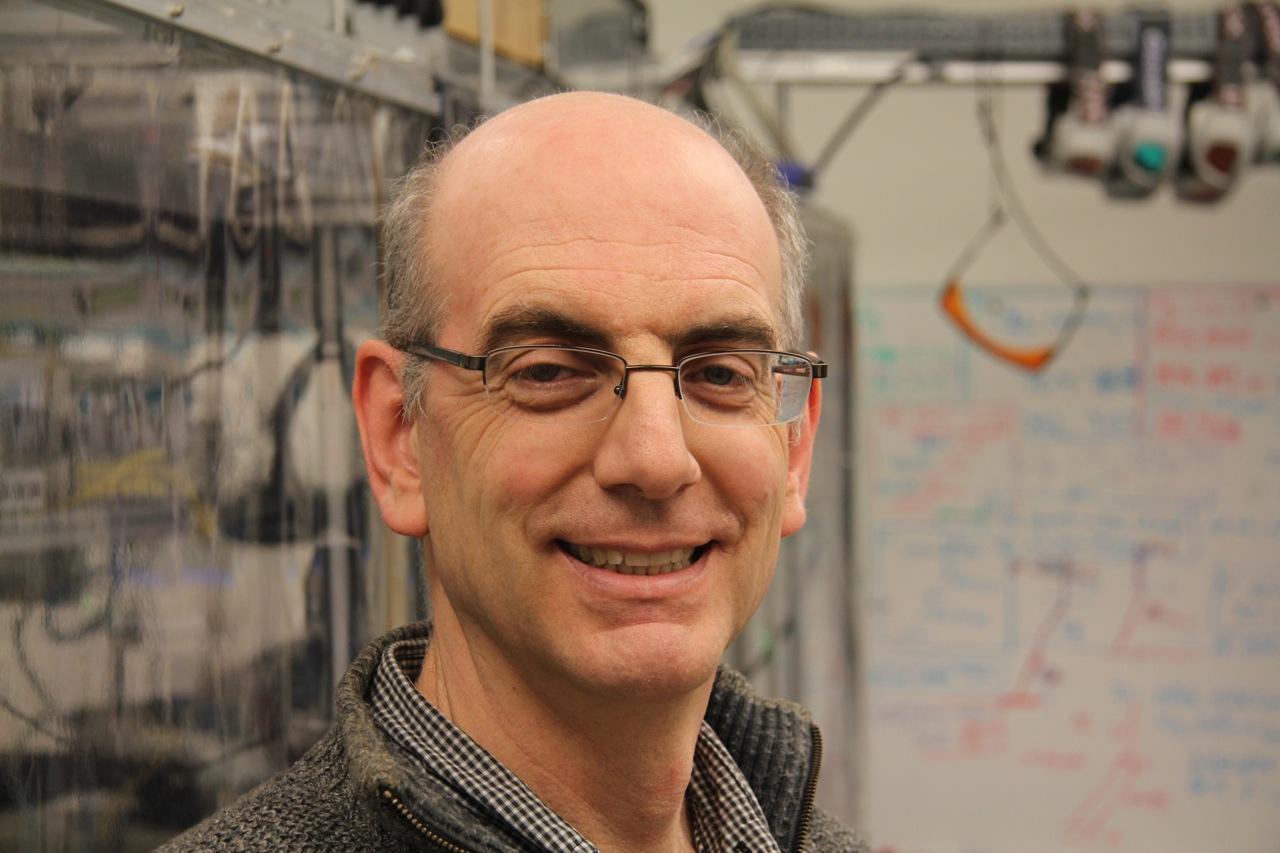The laser polarizer facility (Polarizer), produces ion beams which are highly nuclear- spin polarized, up to 80% or more in some cases. This is accomplished using laser interaction with the incoming beam. The outer electron of each atom passing through counter-propagating laser light repeatedly absorbs and emits photons, indirectly affecting the nucleus as well via the magnetic interaction between the electron and the nucleus. In our case, the angular momentum of circularly polarized light is transferred to the nuclei. Thus a beam with high nuclear polarization becomes available as an analytical tool. The polarizer facility, consisting of a continuous-wave, narrow-bandwidth laser system and the polarizer beam line, was built and is operated under TRIUMF research scientist Dr. Philip Levy. The main usage of the Polarizer has been to provide polarized 8Li for condensed matter studies using beta-detected nuclear magnetic resonance (βNMR) and nuclear quadrupole resonance (βNQR), but it also provides polarized beams for tests of fundamental symmetries and in nuclear structure studies. In the latter category there is overlap with the Laser Spectroscopy group, who conduct collinear fast beam laser spectroscopy (CFBS) experiments using the polarizer facility to determine nuclear moments via precision optical isotope shift and hyperfine structure measurements.
History: the polarizer facility was pioneered by Dr. Levy (ret.) who helped develop and operated the optically pumped polarized H- ion source (OPPIS), which allowed the TRIUMF cyclotron to provide polarized proton beams to high precision experiments. Although the polarized proton program at TRIUMF ended in 2000, OPPIS lives on as the polarized source at Brookhaven National Lab Polarizer laser lab Polarizer beam line Be.
Since 2020 the polarizer is under Dr. Ruohong Li who seeks to expand the range of nuclear spin polarized probes for the ISAC experimental programs and develop these beams to an expanded number of user end stations. To develop optical pumping schemes for isotopes their atomic fine structures and hyperfine structure splittings must be known - and often measured using collinear fast beam laser spectroscopy in the polarizer facility.
Current developments are towards the implementation of nuclear spin polarized beams of a variety of elements to serve existing and new research programs in the life sciences, to achieve highes efficiency in operation and swtich-over between (i) different polarized beams, (ii) colinear fast beam laser spectroscopy experiments and (iii) different b-NMR experiments at new experimental stations.
In the ARIEL era the polarized beams program will see a significant increase in beam hours and move towards multi-species beam delivery program.
8 lithium for beta-NMR, beta-NQR & particle physics | 11 beryllium for sensitive asymmetry detection needed | 31,33 magnesium for b-NMR, nuclear decay spectroscopy |
actinium for bio beta-NMRs |
|
2nd gen. collinear laser spectroscopy(CLS) and polarizer setup upgrades in progress aim for new polarized beams for nuclear physics and materials sciences & collinear resonance ionization spectroscopy | laser system upgrades for multi-beam development (2nd Coherent 899-21 ring-dye laser system (2022), Matisse-CS TiSa ring laser system (2023) lasing also at 671nm (Li wevelength), wavetrain cw-frequency doubler for TiSa laser (2024) | develop next gen. polarizer (POLARIS) for multi element spin polarized beam delivery CFI funding applied for two all-solid state laser systems to cover dye & TiSa laser wavelength ranges in addition to frequency doubling and sum-frequency generation |
Dr. Ruohong Li (Laser Physicist) | post doc (to be filled) | PhD/MSc student (to be filled) |
alumni |
| Aryan Prasad (2023), U Waterloo B EEng, now U Toronto BSc | Pratham Kulkarni (2023) MITACS IIT Guwahati |
| Runa Yasuda, PhD TUAT (2023) | Mathias Roman U Ottawa (2022) |
| Dr. SeongGi Jo, IBS-RAON user group & ChungAn U (Seoul) | EunKang Kim (2019) Ph.D. student Korean National U of Education, now U Mainz-GSI |

